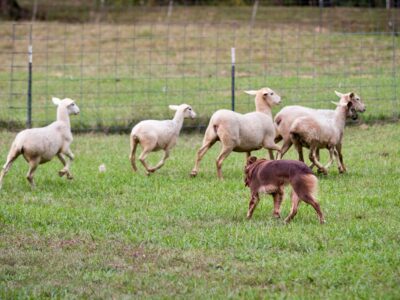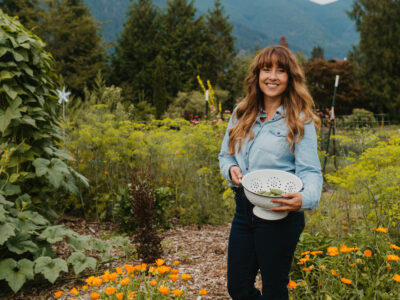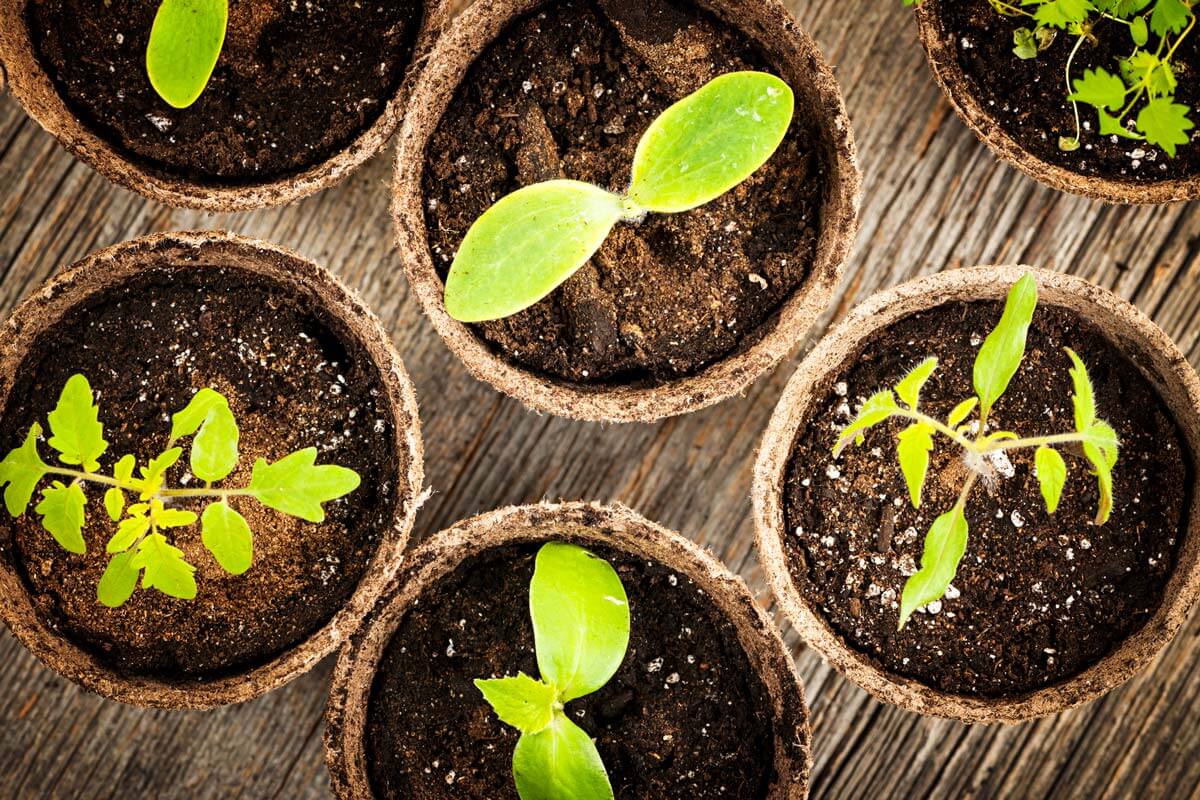Sometimes you can do everything right, follow all the correct steps, and still have seed starting problems with your vegetables and flowers. In this post, we’re troubleshooting seed starting issues and giving solutions, including what to do if you haven’t started seeds yet but still want to grow a garden.
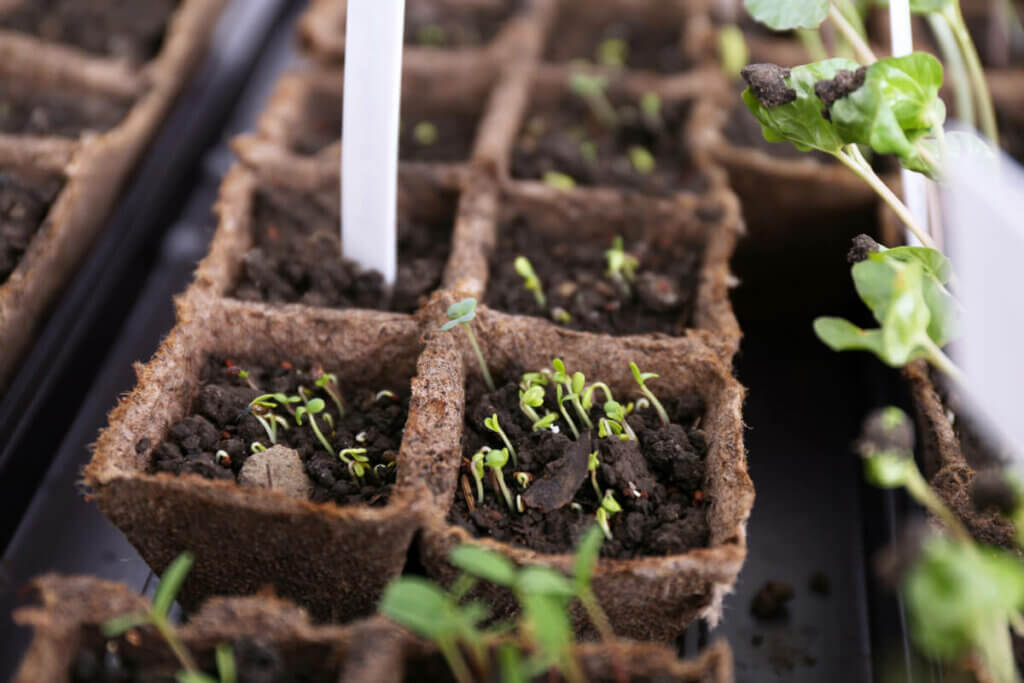
I know a lot of people have had issues with their seed starts this year. Some people talked about it last year, but it seems to be more widespread this year.
Be sure to check out my other posts on if you’re not sure about how to start seeds indoors, what the best seed starting containers are, using the cold-stratification method for seeds, and even potting up and separating seedlings.
What seems to be happening is that seeds are germinating indoors and sprouting just fine, but as soon as they pop up, they seem to get stunted, struggle, or even wither and die.
This info is coming from people who have started seeds indoors successfully for many years, then all of a sudden, are having issues without having changed their seed-starting methods.
I had this issue with my own seedlings this year and had to get to the bottom of it.
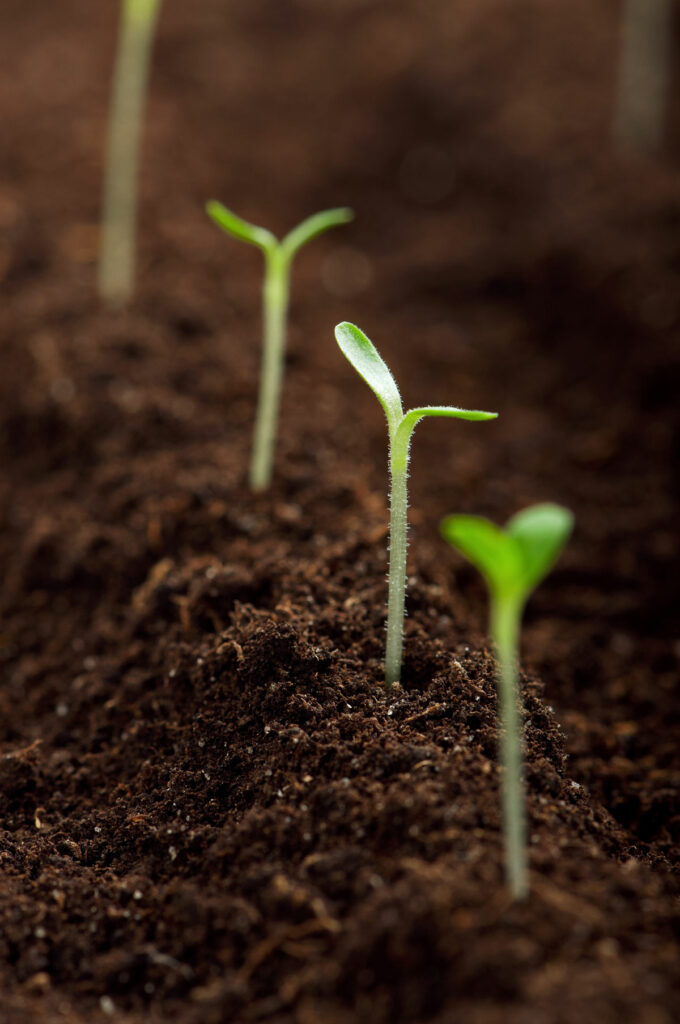
Table of Contents[Hide][Show]
How Seeds Grow
Germination & Sprouting
The amazing thing about seeds is that they store enough energy within the seed itself to be able to germinate and sprout from seed to seedling with just the energy contained within the seed.
Once the seeds have germinated, they then need the energy from the sun (or grow lights), soil and water to continue their growth.
Knowing that I was giving my seedlings adequate light and water, left only the soil to blame.
True Leaves
When your seedlings first sprout, the first set of leaves have smooth sides and don’t always resemble the plant you’re growing (see photo above).
Tomatoes are a perfect example, the first set of leaves are smooth and lack that sawtooth edging that’s classic of a tomato plant.
When that second set of leaves starts to grow, that’s actually the plant’s first set of true leaves. The smooth seedling leaves will eventually die back and fall off and those true leaves will be the “first” set of leaves on the plant.
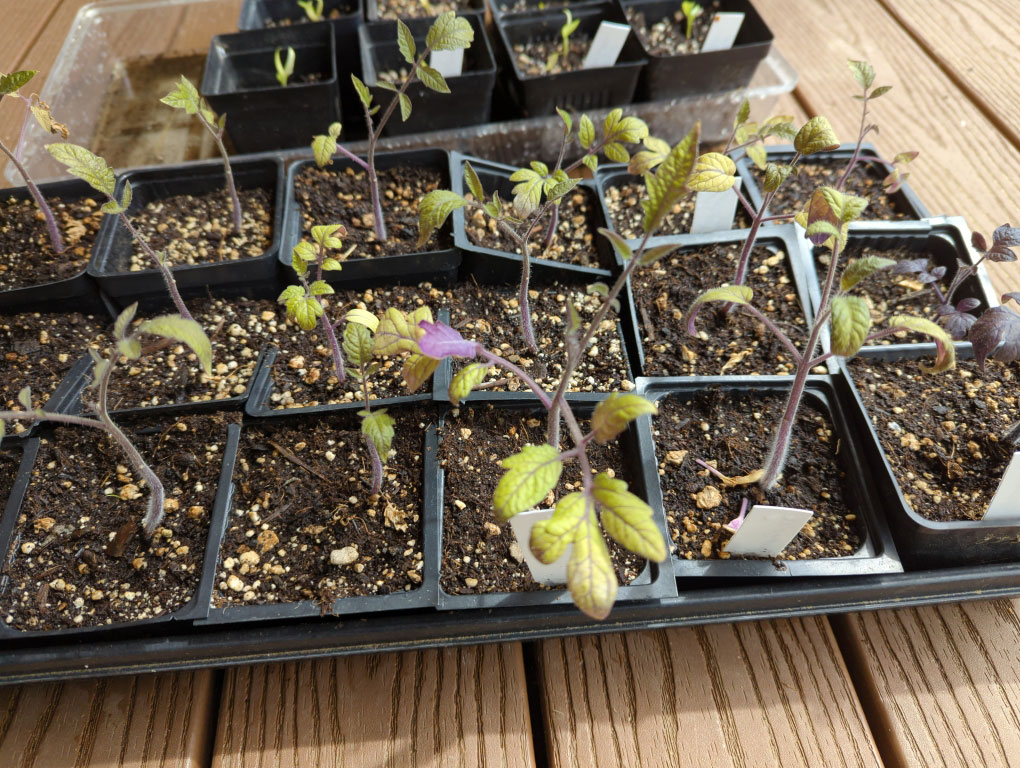
Why Are My Seedlings Dying?
Hearing that I wasn’t the only one having issues with their seedlings struggling or dying, I decided to try and get to the bottom of what was causing this issue.
Digging into my own experience this year, I was growing the same seeds from the same company (or those I seed saved myself), using the same grow lights and setup from years past, and using a seed starting mix for the germination/seedling phase.
The only thing that could potentially be the culprit was the soil. I had a suspicion that, due to the increase in gardening demands over the past two years, these companies might be having a hard time keeping up with their supply, but hadn’t given it much thought beyond that.
If you want to actually test the pH levels of your potting soil or fix tainted soil through soil remediation, you can follow the instructions in the linked posts. You can also order soil testing kits from Redmond quite inexpensively. Alternatively, check with your local extension office, though not all of them offer soil testing, some still do for very little cost.
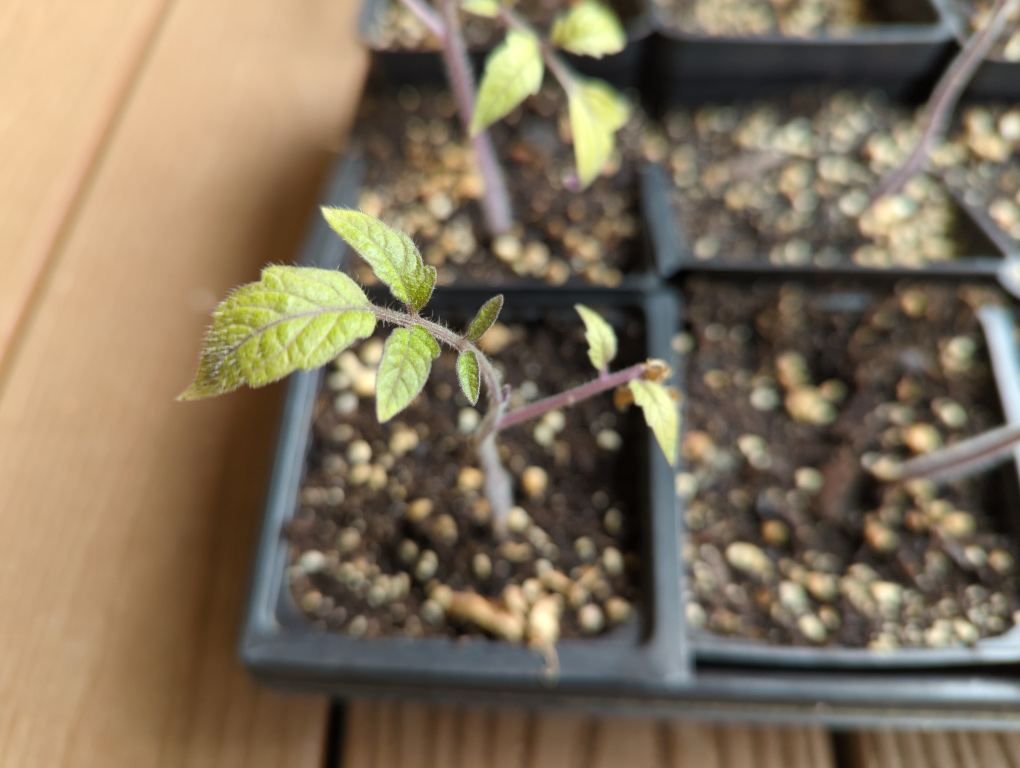
Yellowing of Leaves
As those true leaves begin to develop on your plant, I’m hearing from many people that their plants then just kind of stop developing, or are growing extremely slowly.
If you’re noticing yellowing of the leaves on your plants, this is generally a sign of nitrogen deficiency.
However, there can also be other issues at play.
High Potassium
If you have too much potassium in the soil itself, it inhibits the plant from appropriately drawing up the nutrients from the soil.
So the nutrients might be in the soil, but if there’s too much potassium, the plant can’t access them.
Moisture Level
Be sure to pay attention to how much you’re watering. If the soil is too heavy and/or too wet, the roots can’t draw up the nutrients.
Be sure to pay attention to moisture levels if you’re using heat mats, because they can actually cause the soil to dry out much faster than you might expect.
PH Levels
If the pH levels are off by too much one way or the other, this will make it hard for the plant to draw up the nutrients as well.
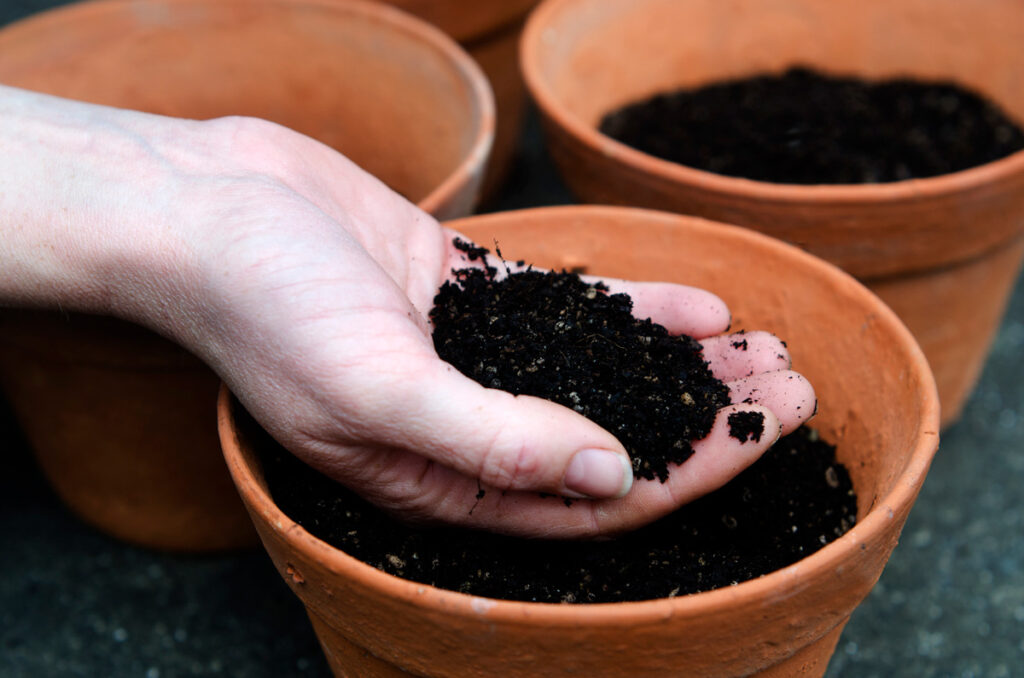
Potting Soil
So now that we know all of the possible reasons our seedlings might be struggling, how do we troubleshoot our potting soil to know what’s at play?
For seedlings, it’s important that the potting soil is very loamy and light, allowing for good moisture retention and drainage without getting too compact and heavy.
Bark
I happen to buy the same brand of potting soil each and every year. And this year I noticed that there was a lot more bark in the soil than in years past.
Having bark in the soil is a good thing, but the size of the bark and how much they’ve broken down are important.
Large pieces of bark can make it hard for plant roots to reach the soil to draw up nutrients. They can block the ability of the seedling to push through to the surface causing lower germination rates. And bark can also tie up available nitrogen as it continues to break down.
One way to avoid this is when you’re planting your seedlings, to remove those larger pieces of bark before planting. This may not fix every issue, but can certainly be a good place to start.
Wet or Moldy Soil
If you’re reusing potting soil year over year, or the potting soil you’ve purchased from a nursery is very wet, the nutrients in the soil are actually being used up as it continues to break down.
When you store your soil you want to make sure to seal it up and store it in a cool dry place where bugs and moisture can’t get to it.
Too Much Compost
When starting seedlings it’s important not to use 100% compost. Compost is great, but you need the right amount. Think of it like Goldilocks and the Three Bears. Not too much, not too little, but just the right amount.
Now we generally expect that our store-bought seedling mix is going to come with the correct ratios of compost to soil, but this might not be the case.
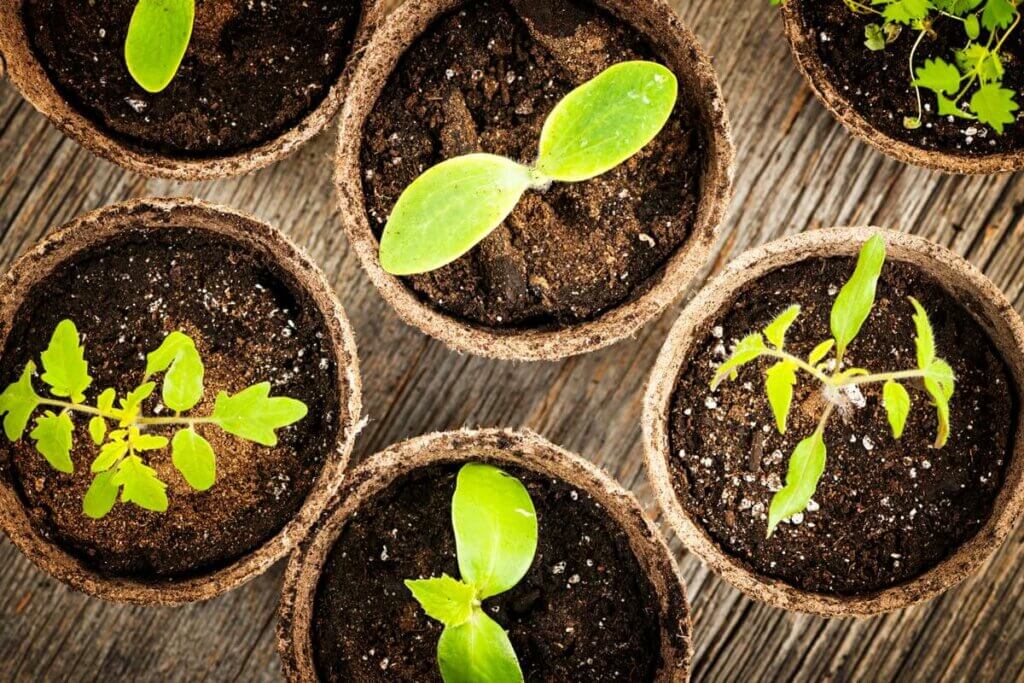
Troubleshooting Seedling Growth
1. Re-plant in New Soil
The first step I would recommend taking if you’re noticing your seedlings are struggling to grow or thrive is to get a new bag of potting soil from a different brand.
Make sure the soil doesn’t have too much mulch, that it’s not too wet or saturated, and that it’s nice and loamy.

2. Transplant Outdoors
If your weather is at a place where your seedlings could survive if planted outdoors, go ahead and skip step one of re-planting, and get those seedlings hardened off.
To do this, slowly introduce them to the outdoor temperatures. Start with just two hours the first day, then add two hours each day for a week. They should then be able to be planted without going into shock.
It can take a couple of weeks, but in most cases, after those seedlings have been put out into good soil, they will start to grow again.
If all of your leaves look yellow and really sad, they may not come back, but even if there are a couple of good-looking healthy leaves, they might make a comeback.

What if I Didn’t Start Seeds?
I have heard from some of you who never got around to starting seeds indoors and you’re curious if it’s too late to plant a garden this year.
No! It’s not too late!
There are a couple of options when it comes to growing a garden.
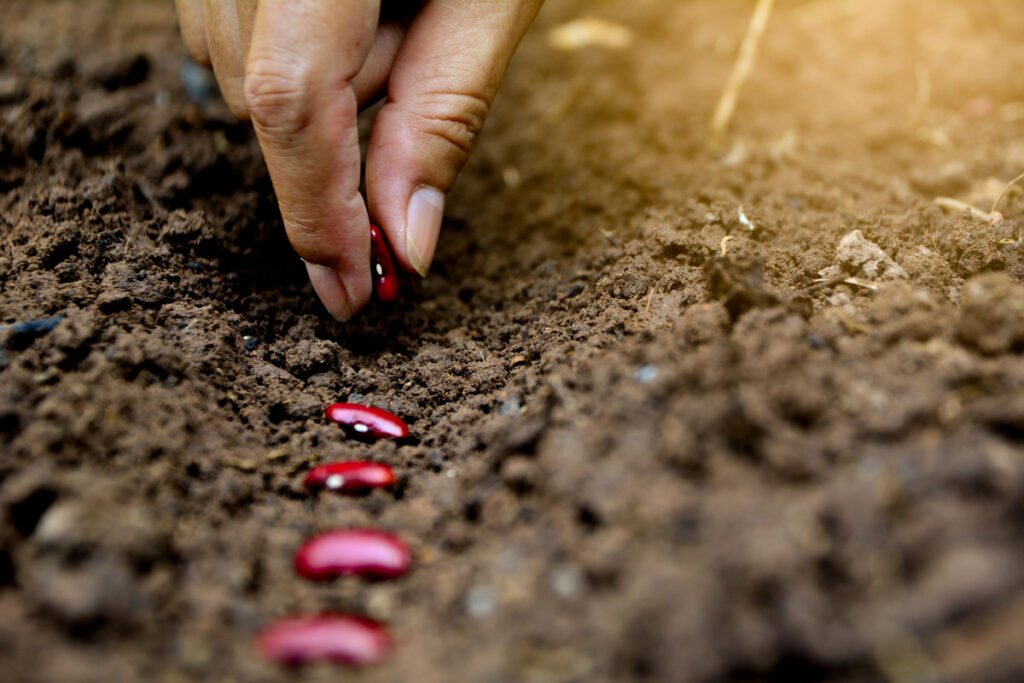
1. Direct Sow
You can direct sow many seeds right into the garden if the weather is permitting. Be sure to read the backs of the seed packets to know what temperature they germinate at and compare that to the weather you’re having at the time of planting.
It’s also important to know if the threat of frost has passed and whether that matters to the seeds you’re planting.
Learn more about reading seed packets and how to use that information for your own garden here.
2. Ask a Friend
If your seedlings just aren’t doing well, ask around to those you know who also start seeds indoors and see if they have any extras.
I generally start more plants than I’m going to plant simply to allow for accidents. If I have extras when it comes time to plant, I’m more than happy to share them with friends.
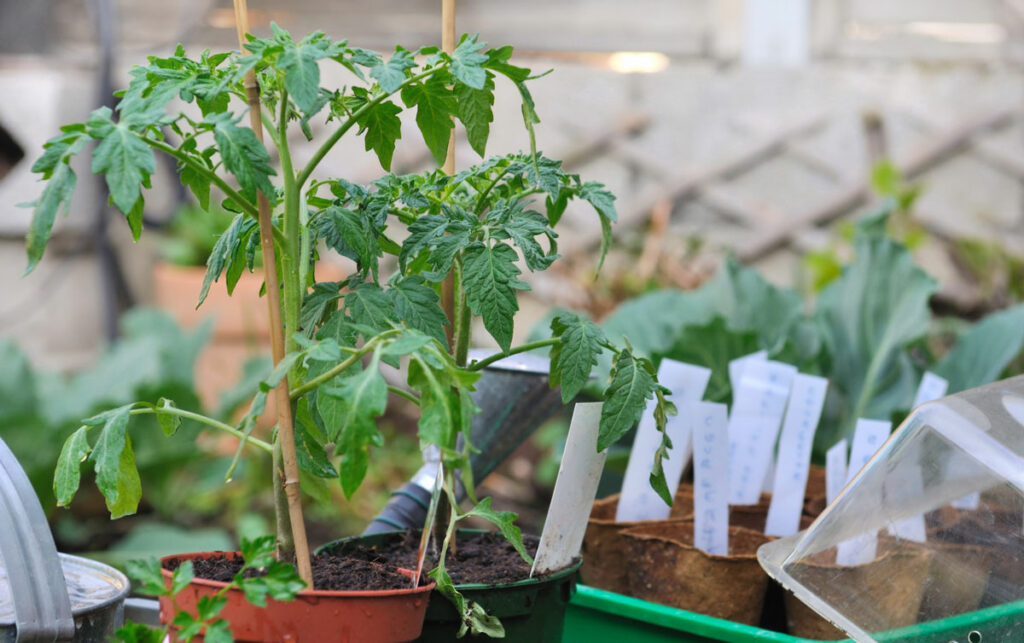
3. Purchase Plants
Because of my pitiful tomato seedlings this year, I’ve already ordered some tomato plants from Azure Standard as a failsafe just in case my tomatoes don’t make a comeback.
There are many nurseries and even some big box stores that might still have good inventory for you to buy plants and get them into the garden.
Yes, this is a more expensive route than starting the seeds yourself, but it will still save you money in the long run over buying produce from the grocery store.
Verse of the Week: Matthew 6:25-27
More Articles to Get Your Garden Off to a Good Start:
- Ultimate Seed Starting Guide
- Beginner Gardening Secrets You Need to Know
- GMO Seeds & How to Avoid Them
- Time-Saving Tips For New Gardens
- Where to Buy Heirloom Seeds – Heirloom, Hybrid & GMO Differences
- Best Way to Germinate Seeds – How to Germinate Seeds Faster
- Potting Up Seedlings & How to Separate Seedlings
- Heirloom Seed Saving & Gardening
[fusebox_transcript]
